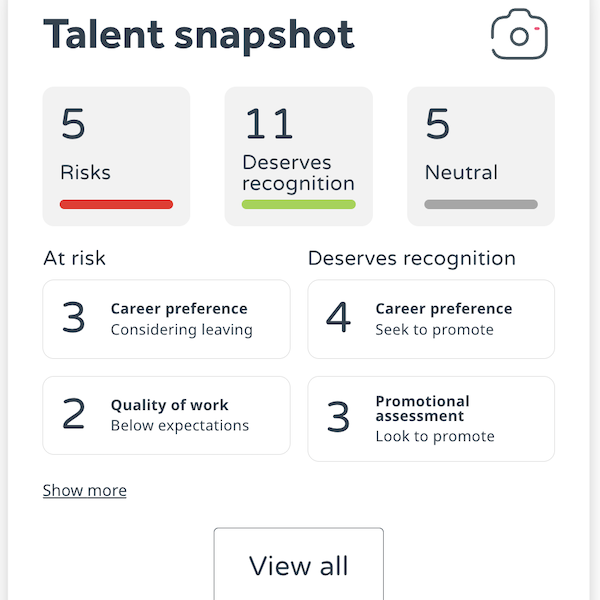The Perfect Employee Value Proposition: How to Attract and Retain Top Talent

In this article, we will delve into the secrets of crafting the perfect Employee Value Proposition. We will explore strategies to create an EVP that aligns with your brand’s voice and resonates with potential employees. By incorporating your brand’s unique personality into the EVP, you can attract individuals who not only possess the right skills but also share your company’s values and culture.
From defining your company’s mission and values to offering competitive compensation and benefits, we will explore various elements that contribute to an effective EVP. With a well-crafted EVP in place, you can attract top talent, reduce turnover, and ultimately drive business success.
Are you ready to take your employee recruitment and retention strategies to the next level? Let’s dive in and discover the secrets to creating the perfect Employee Value Proposition.
What is an Employee Value Proposition (EVP)?
An Employee Value Proposition (EVP) is the unique set of benefits and rewards that an organisation offers to its employees in exchange for their skills, capabilities, and experience. It encompasses the total value an employee receives by working for a company, beyond just financial compensation. A strong EVP not only attracts top talent but also serves as a compelling reason for employees to stay with the organization. It defines the overall employee experience and helps differentiate a company from its competitors in the job market.
Crafting an effective EVP involves understanding what motivates employees, aligning the EVP with the organization’s culture and goals, and communicating it clearly to both current and potential employees. It should reflect the company’s values, mission, and vision, while also addressing the needs and expectations of employees at different stages of their career. A well-defined EVP helps in creating an emotional connection with employees, fostering loyalty, engagement, and productivity within the organization.
The importance of a strong EVP in attracting and retaining top talent
In today’s competitive labor market, attracting and retaining top talent has become a strategic imperative for organisations looking to drive innovation and maintain a competitive edge. A strong EVP plays a crucial role in attracting high-caliber candidates who are not only qualified for the job but also fit well within the company’s culture. It serves as a powerful tool for recruitment, helping organisations stand out as desirable employers in the eyes of potential candidates.
Moreover, a well-crafted EVP contributes to higher employee engagement and satisfaction levels, leading to improved retention rates and reduced turnover costs. When employees feel valued, supported, and connected to the organization, they are more likely to stay committed and perform at their best. This, in turn, translates into better business outcomes, as engaged employees are more productive, innovative, and customer-focused, driving overall performance and profitability.
Components of an effective employee value proposition
An effective Employee Value Proposition comprises a combination of tangible and intangible elements that collectively define the employment experience within an organization. While competitive salary and benefits are important components of an EVP, they are just the tip of the iceberg. Other critical factors that contribute to a compelling EVP include career development opportunities, work-life balance, a positive work environment, recognition and rewards, and a strong company culture.
Organisations need to carefully design their EVP by considering the needs and preferences of their target talent pool. For some candidates, opportunities for professional growth and advancement may be more important, while others may value flexibility, meaningful work, or a supportive team environment. By offering a well-rounded EVP that addresses a variety of employee needs, organisations can attract a diverse talent pool and create a more inclusive and engaging workplace.
Crafting your unique employee value proposition statement
Crafting a unique EVP statement involves distilling the essence of what makes your organization a great place to work into a concise and compelling message. This statement should capture the key elements of your EVP in a way that resonates with both current employees and potential candidates. It should communicate the value proposition clearly, highlighting the benefits and opportunities that employees can expect when they join the organization.
When developing your EVP statement, consider incorporating elements such as your company’s mission, values, culture, and the impact employees can make within the organization. Use language that reflects your brand’s voice and personality to create an authentic and memorable statement. Keep it concise, engaging, and easy to understand, ensuring that it conveys the unique attributes that set your organization apart as an employer of choice.
How to communicate your EVP to potential candidates
Once you have crafted your EVP statement, the next step is to effectively communicate it to potential candidates through various channels and touchpoints. Your EVP should be integrated into your employer branding efforts, including your career site, job postings, social media presence, and recruitment materials. Use storytelling and real-life examples to bring your EVP to life and showcase what it’s like to work at your organization.
Engage your current employees as brand ambassadors to share their experiences and perspectives on working for the company. Encourage them to participate in employer branding activities, such as employee testimonials, blog posts, and social media takeovers. By leveraging the voices of your employees, you can provide authentic insights into the employee experience and strengthen the credibility of your EVP among potential candidates.
Case studies: Successful companies with compelling EVPs
Several organisations have set the benchmark for creating compelling EVPs that resonate with employees and attract top talent. Companies like Google and Salesforceare known for their strong EVPs that emphasise employee empowerment, career development, and a positive work culture. Google, for instance, offers perks such as free meals, on-site fitness centres, and opportunities to work on innovative projects, attracting top tech talent from around the world.
Salesforce, on the other hand, focuses on creating a culture of trust, transparency, and equality, with initiatives like volunteer time off, diversity programs, and employee resource groups. These companies have successfully leveraged their EVPs to build employer brands that appeal to a diverse range of candidates and drive employee engagement and loyalty. By studying these case studies, organisations can gain insights into best practices for developing and promoting a compelling EVP.
Measuring the impact of your EVP on employee engagement and retention
To assess the effectiveness of your EVP in attracting and retaining talent, it’s essential to measure its impact on key metrics such as employee engagement, retention rates, and recruitment success. Conduct surveys, focus groups, and interviews to gather feedback from employees about their perceptions of the EVP and its influence on their decision to join and stay with the organisation. Monitor turnover rates, performance metrics, and employee satisfaction scores to track the overall impact of the EVP on your workforce.
Use data analytics and HR metrics to quantify the ROI of your EVP initiatives and identify areas for improvement. Measure employee engagement levels, productivity, and job satisfaction before and after implementing changes to your EVP to evaluate the effectiveness of your strategies. By continuously monitoring and analyzing the impact of your EVP, you can refine and enhance it over time to better meet the evolving needs and expectations of your workforce.
Common mistakes to avoid when developing an EVP
While creating an EVP, organisations should be mindful of common pitfalls that can undermine its effectiveness and relevance. One common mistake is developing a generic EVP that lacks differentiation and fails to showcase what makes the organization unique as an employer. It’s essential to tailor the EVP to reflect the specific culture, values, and opportunities that set the organization apart in the marketplace.
Another mistake is not involving employees in the EVP development process. Employees are the best ambassadors of the company culture and can provide valuable insights into what motivates and engages them. By soliciting feedback and involving employees in shaping the EVP, organisations can ensure that it resonates with the target audience and accurately reflects the employee experience. Avoiding these common mistakes can help organisations create a more compelling and authentic EVP that drives employee attraction and retention.
Enhancing your EVP over time to stay competitive
In a dynamic and competitive job market, organisations must continuously evolve and enhance their EVP to remain attractive to top talent. Regularly review and update your EVP to align with changing market trends, employee preferences, and organizational priorities. Seek feedback from employees, candidates, and key stakeholders to identify areas for improvement and innovation in your EVP strategies.
Consider conducting benchmarking studies to compare your EVP against industry peers and best practices. Stay abreast of emerging trends in employee benefits, workplace flexibility, and diversity and inclusion to ensure that your EVP remains relevant and competitive. By staying proactive and responsive to the evolving needs of your workforce, you can position your organization as an employer of choice and attract top talent in a competitive talent landscape.
Conclusion: The power of a compelling EVP in building a strong workforce
In conclusion, a compelling Employee Value Proposition is a critical tool for attracting, engaging, and retaining top talent in today’s competitive job market. By defining a clear EVP that aligns with the organization’s culture, values, and goals, companies can differentiate themselves as employers of choice and create a positive employee experience. A strong EVP not only attracts high-caliber candidates but also fosters employee engagement, loyalty, and productivity, leading to better business outcomes.
To create the perfect EVP, organisations must consider a holistic approach that encompasses various elements such as competitive compensation, career development opportunities, work-life balance, and a supportive work environment. By crafting a unique EVP statement, effectively communicating it to candidates, and continuously measuring and enhancing its impact, organisations can build a strong workforce that drives innovation, growth, and success. Invest in your EVP today to secure the top talent that will propel your organization to new heights of excellence.
Grab a copy of this white paper on reducing turnover.


